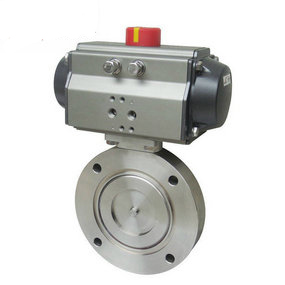How to control pneumatic cast iron butterfly valve? Generally, when the control personnel are in the station or control room, they are required to have reliable control performance on the valve, and the valve itself is required to have protective and explosion-proof measures. Especially for long open valves, it is required to cut off accurately in case of sudden change. Therefore, reliable control performance has become the focus. In view of the above conditions, Q41WC series of sulfur resistant pipeline valve hard sealed pneumatic ball valve has been launched. The ball and integral seat are coated with chromium carbide and tungsten carbide using rocket application technology. This will increase the surface hardness by nearly an order of magnitude, which is superior to the conventional welding overlap reinforcement technology. The high-strength inconel x-750 spring forces the valve ball into the valve seat. This design solves many of the problems that occur in the setting up of trunnion bearings and corrosion. The free clearance between the valve ball and the valve seat is eliminated. Unlike the floating pneumatic ball valve, the design does not require upstream pressure to provide a tight seal. The spring makes the valve self compensating and provides anti-static protection.

Working principle of pneumatic butterfly valve The butterfly plate is driven by the valve stem. If it turns 90 °, it can be opened and closed once. The flow of medium can be controlled by changing the deflection angle of the butterfly plate. The commonly used butterfly valves are wafer type butterfly valve and flange type butterfly valve. Wafer type butterfly valve uses stud bolts to connect the valve between two pipe flanges. Flange type butterfly valve has flanges on the valve, and bolts are used to connect the flanges on both ends of the valve to the pipe flanges.




